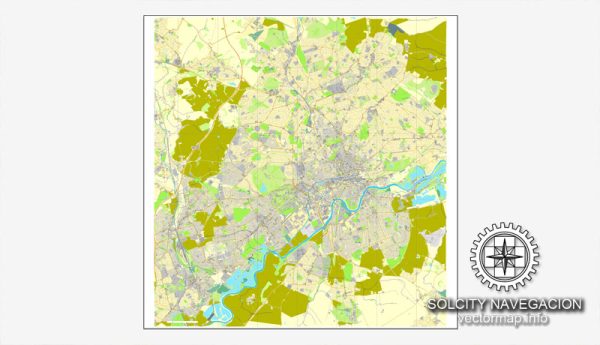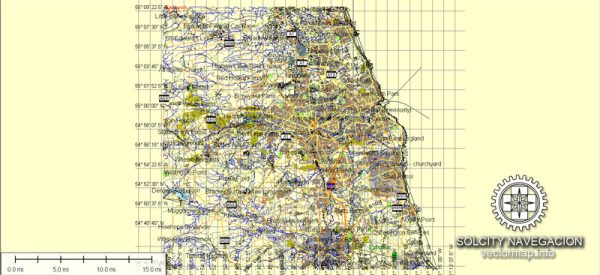Newcastle upon Tyne, often referred to simply as Newcastle, is a city in the northeast of England with a rich architectural history. Its architectural landscape is a blend of historic and modern structures, reflecting its evolution from a medieval settlement to a vibrant, contemporary city. Here’s a description of the architecture in Newcastle, UK:
- Medieval Architecture: Newcastle’s architectural heritage dates back to the medieval period. One of the most iconic landmarks is Newcastle Castle, which gave the city its name. The castle was originally built in the 12th century and is a fine example of Norman architecture. It features a striking keep and offers panoramic views of the city and the River Tyne.
- Gothic and Victorian Architecture: The city boasts several Victorian-era buildings, with some influenced by the Gothic Revival style. Notable examples include Grey Street, a grand avenue lined with elegant 19th-century buildings, and the Cathedral Church of St. Nicholas, a magnificent Gothic-style Anglican cathedral.
- Industrial Heritage: As a hub of industry and coal mining during the 19th century, Newcastle features many historic industrial buildings. The BALTIC Centre for Contemporary Art, once a flour mill, has been transformed into a modern art gallery, preserving its industrial character. The Ouseburn Valley also showcases remnants of the city’s industrial past.
- Georgian and Edwardian Architecture: Quayside, along the River Tyne, is an area where you can find a mix of Georgian and Edwardian architecture. This picturesque part of the city has been revitalized with trendy bars, restaurants, and apartments housed in old warehouses and merchant buildings.
- Bridges: One of the most iconic features of Newcastle’s architecture is its bridges. The Tyne Bridge, completed in 1928, is a symbol of the city and a testament to its industrial heritage. Other notable bridges include the Swing Bridge and the High Level Bridge, both engineering marvels of their time.
- Modern Architecture: In recent years, Newcastle has seen significant urban development, resulting in the construction of modern architectural gems. The Sage Gateshead is a stunning concert hall and conference center with its unique glass and stainless steel design. The Gateshead Millennium Bridge is another contemporary marvel, a tilting bridge that adds to the city’s skyline.
- University Campuses: The city is home to two major universities, Newcastle University and Northumbria University. These campuses feature a mix of historic and modern buildings, reflecting the evolution of educational architecture.
- Residential Architecture: The city is characterized by a mix of housing styles, from historic terraced houses in neighborhoods like Jesmond to modern apartment complexes in the city center. Quayside, in particular, offers upscale residential options with views of the river and the iconic bridges.
Newcastle’s architecture is a captivating blend of old and new, making it a city that appeals to both history enthusiasts and admirers of modern design. The city’s diverse architectural landscape tells the story of its evolution over centuries and its continuing transformation into a thriving, contemporary urban center.



 Author: Kirill Shrayber, Ph.D.
Author: Kirill Shrayber, Ph.D.